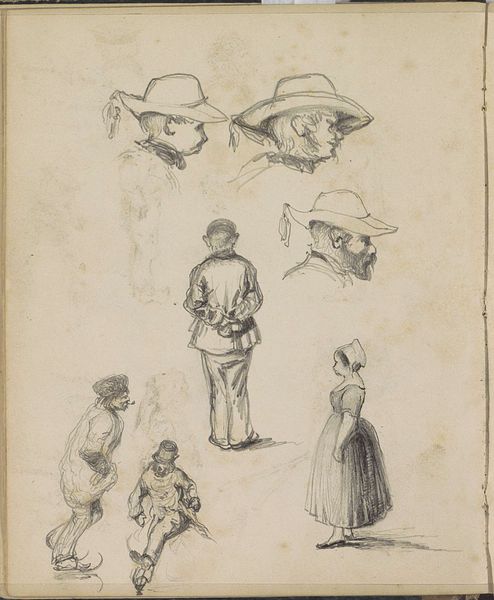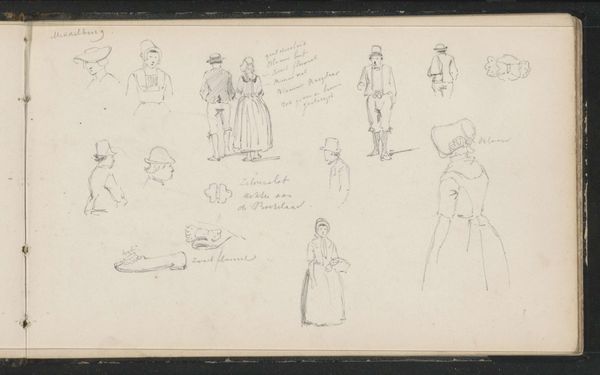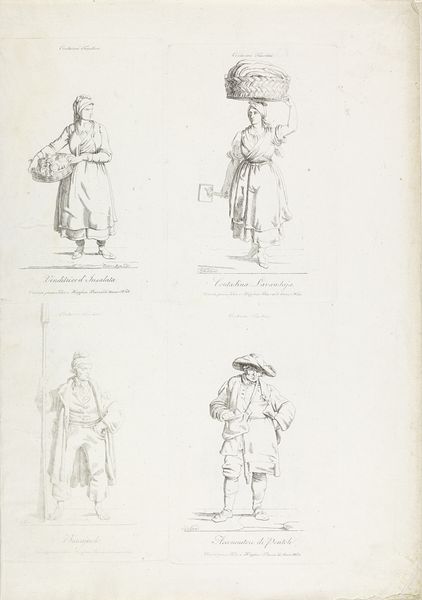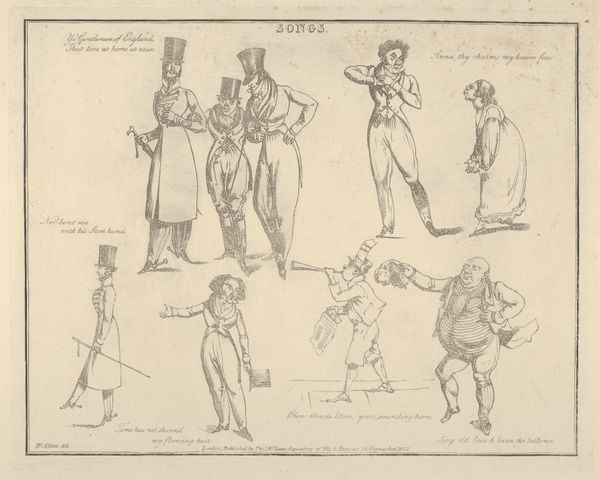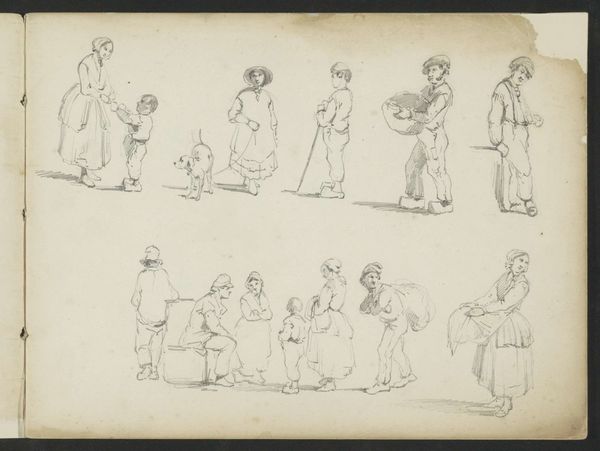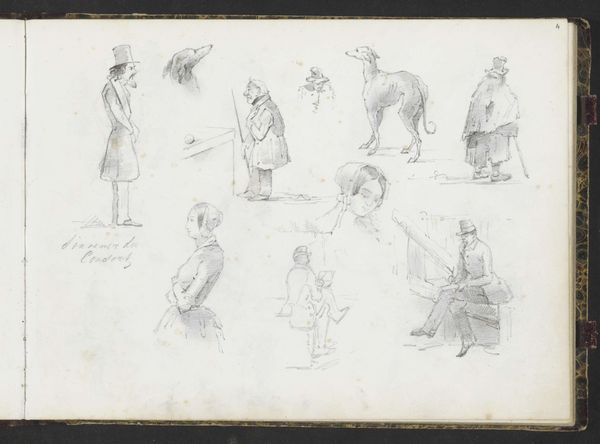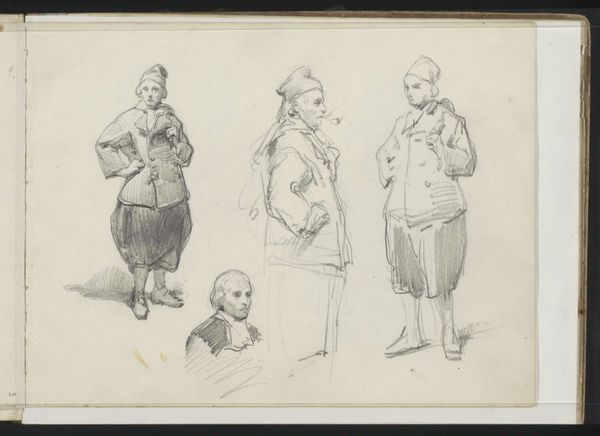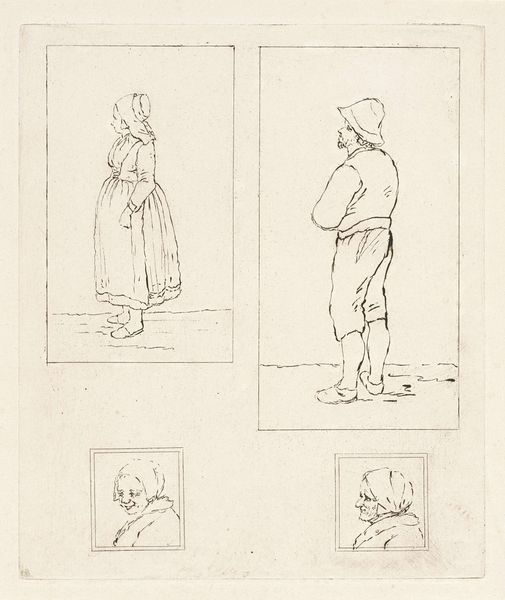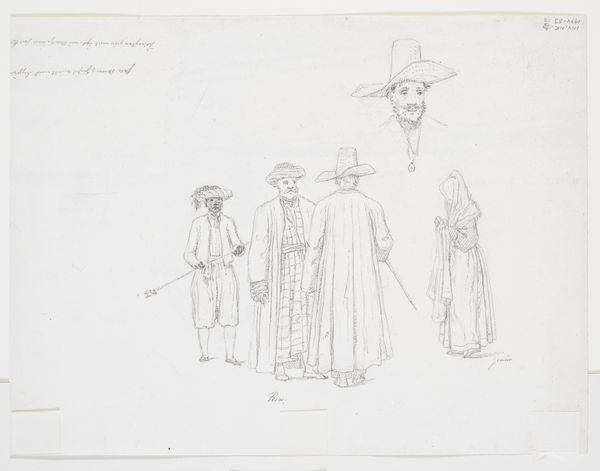
Studieblad, onder andere met pijprokende mannen en vrouwen bij een houten emmer 1841 - 1853
0:00
0:00
johannestavenraat
Rijksmuseum
drawing, paper, ink, pencil
#
drawing
#
imaginative character sketch
#
quirky sketch
#
sketch book
#
figuration
#
paper
#
personal sketchbook
#
ink
#
idea generation sketch
#
sketchwork
#
sketch
#
pencil
#
sketchbook drawing
#
genre-painting
#
storyboard and sketchbook work
#
sketchbook art
#
fantasy sketch
Copyright: Rijks Museum: Open Domain
Curator: This is "Studieblad, onder andere met pijprokende mannen en vrouwen bij een houten emmer," or "Study Sheet, Including Pipe-Smoking Men and Women by a Wooden Bucket," by Johannes Tavenraat. Created sometime between 1841 and 1853, it's a sketch executed in pencil, ink, and wash on paper. What are your first impressions? Editor: It strikes me as a glimpse into everyday life—perhaps studies for a larger work. The composition feels raw, like observing scenes from a bygone era, capturing gestures and expressions with remarkable immediacy. It’s melancholy but also intriguing. Curator: Yes, precisely! The use of line is masterful; notice the economy with which Tavenraat renders form and volume. The varying densities of ink create depth, a clear manipulation of light and shadow. It’s the semiotic density of each stroke which holds power, evoking entire figures. Editor: I agree. But beyond formal elegance, there's social commentary here too. The presence of pipe-smoking individuals implies a certain class and leisure, while the women gathered around the bucket likely represent the laboring class. These sketches offer silent narratives about gender roles and societal structure within the 19th-century Dutch milieu. Curator: An astute point. I'm particularly fascinated by how Tavenraat isolates individual features and expressions. Observe the subtle distinction of hats. Each choice speaks to underlying psychological states and perhaps to emergent national identity. The formal repetition unifies distinct elements. Editor: Absolutely, the hats tell a story of social roles and maybe regional differences! There’s also something about the lone child that draws my eye. Given the context of child labor in the 19th century, the drawing may reveal something unsettling—the precarity and social conditions imposed upon the young in Dutch society. Curator: Ultimately, this work speaks to Tavenraat's skillful observation of reality distilled to essential form, transforming observation into a system of symbols. Editor: Indeed, this sketchbook page functions as an intersectional study that captures history and speaks quietly to us.
Comments
No comments
Be the first to comment and join the conversation on the ultimate creative platform.
